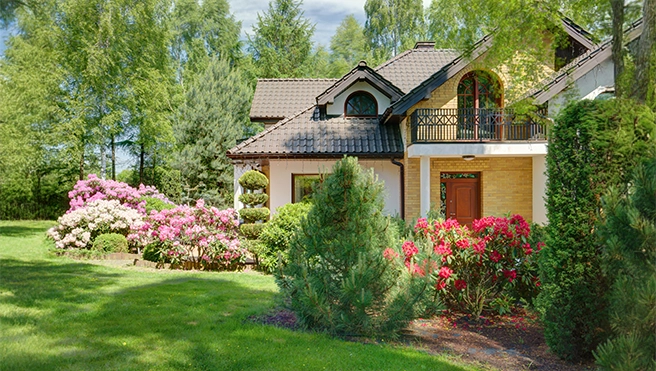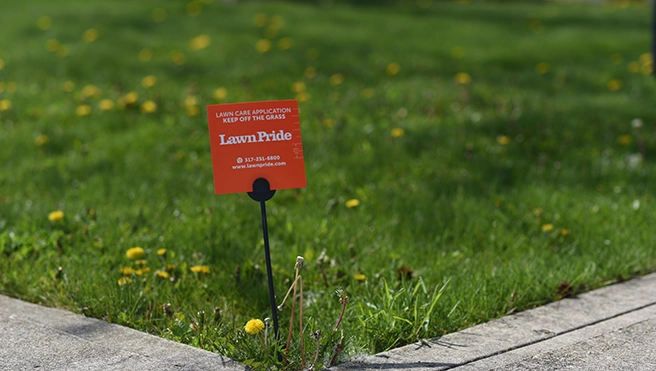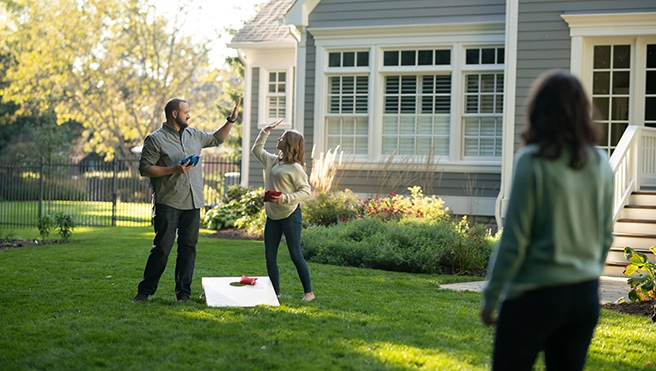Get to know five of the most common weeds in our state, and how you can start getting rid of them today!
Crabgrass (Digitaria)
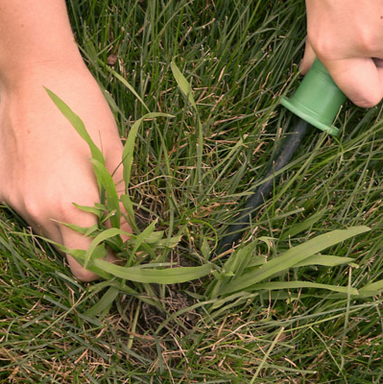
Arguably the most common weed around here, many folks don’t even realize they have it growing at home because it looks a lot like real grass. Crabgrass is often found in the yards of homeowners who skipped spring fertilizing and pre-emergent treatments. It is green and easily blends in with the rest of your lawn, but telltale signs include thicker blades that don’t grow at the same speed as your turfgrass, and side shoots that look like tiny branches – crabgrass grows outward as it grows upward.
One of the easiest ways to promote crabgrass growth in your lawn is by cutting your grass too short – something many of us who hate mowing have done.
Foxtail (Setaria)
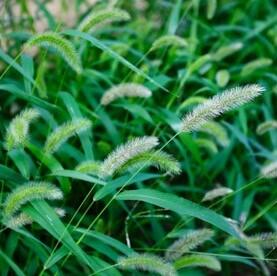
Like crabgrass, foxtail is an annual weed that likes to return every year if not properly treated. It gets its name from the long, bushy top when it is full-grown, which resembles a fox’s tail. Also like crabgrass, it is often mistaken for real grass when it starts and isn’t noticed until it begins to take over your lawn. Foxtail is more prone to lawns with thin, not lush grass cover, and bare grounds and gardens. However, it isn’t picky and can grow in moist or dry conditions.
A full, healthy, well-fed lawn is necessary to prevent foxtail from taking hold.
Ground Ivy (Glechoma Hederacea)
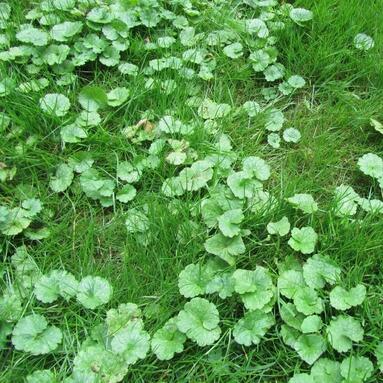
The perennial broadleaf weed known as ground ivy is a perennial problem for many homeowners across Indiana. Like the rest of the weeds in this guide, it is pretty hearty in a variety of settings, but you are more likely to find it if you have a lot of tree cover or other shady spots in your yard. Ground ivy, also known as Creeping Charlie, features slender vines that grow outward and hug the ground. Its leaves are rounded with scalloped edges. It lets off a minty aroma when stepped on or mowed over. In late spring, tiny purple flowers sprout. Ground ivy is one of the most pervasive and hard to kill weeds. A high-quality selective herbicide can help, but be sure to follow the manufacturer instructions carefully.
Dandelion (Taraxacum Officinale)
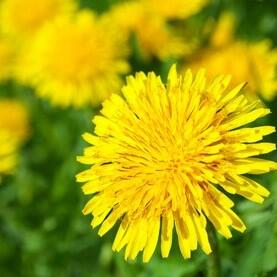
Oh, the dandelion … a favorite for kids and the bane of most adults’ existence. The unmistakable yellow blossoms of dandelion weeds prefer sunlight but can also grow in the shade. When it’s time to reproduce, their puffy balls of seed let loose with the slightest bump or breeze.
Dandelion leaves form a small patch at the base of the ground, and their taproots can be difficult to fully remove. Unless the root is completely removed or killed, pieces of it will produce new plants.
If you want the ultimate protection from all types of weeds, talk to the team at Lawn Pride of Indianapolis. Be sure to ask about our guaranteed seven-application program, a multipurpose weed control solution that is tailored to your lawn. Get the yard of your dreams by getting in touch with Lawn Pride today!
Nutsedge (several Cyperus variants)
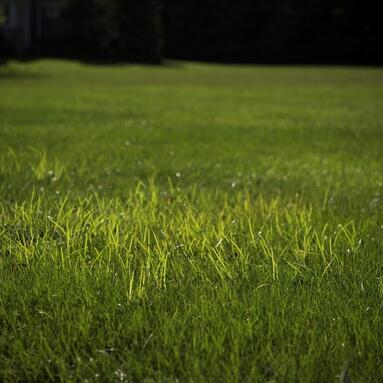
Also commonly known as nutgrass, this fast-growing perennial isn’t a grass – it’s yet another aggressive weed that can be pretty tough to kill. Nutsedge loves the hot summer months, and it stands out from your real grass blades because it tends to stand a bit taller. Its pale green strands grow faster than most grasses. If you can’t discern the slight color differences, nutsedge is easily identified by its stems that grow in the shape of a “V.”
While some specialized herbicides on the market specifically target nutsedge, another alternative is simply adjusting your mowing technique. Raise the height setting on your mower and leave your lawn taller. This will strengthen your grass, which in turn will muscle this weed out of the way.
Spurge (Euphorbia Maculata)
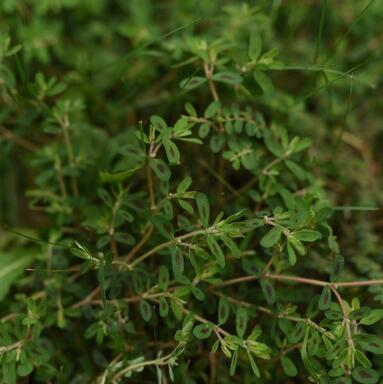
“I think I can, I think I can.” Remember that classic fairytale? Well, spurge is the little weed that could, and it turns into a big nuisance for homeowners across Indiana. This dense plant is easily identified by its red stems and green leaves with small red spots. Spurge can take root and grow quickly just about anywhere. It especially thrives in thin, weak areas of your yard, in flower beds, and even between cracks or stones in your sidewalk and driveway.
You’ll need to put a bit of back into it, but spurge is one of our favorite weeds to uproot by hand. Although it grows fast and a single plant can produce more than a thousand seeds, it is no match for the sharp eye of a homeowner. For larger patches and preventative measures, use a grass-safe herbicide and be sure to maintain a healthy, well-manicured lawn.
Thistle (Asteracae Family)
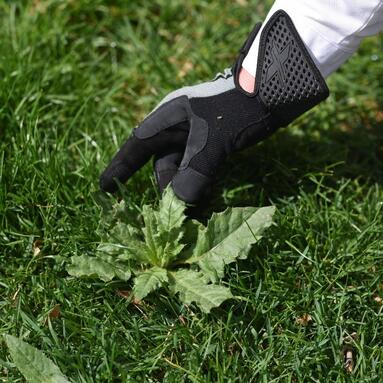
All weeds are stubborn, but thistles are right up there at the top when it comes to being simply annoying. Pluck ‘em, pull ‘em, spray ‘em, stomp ‘em … they always seem to come back! There are several varieties of thistle, but many of the more common plants we see around here tend to feature a blooming purple flower and sharp, pointy green leaves.
Some weed killers work on thistle, but you need to make sure you apply enough to reach their taproots while taking care not to overspray or splash nearby beneficial plants and grasses. If you’re patient, you can take note of where thistles are growing around your lawn and cut the stems below the lowest leaves with a good pair of garden shears. Although the plants will grow back, if you repeat this process a few more times, the roots will become too weak to regrow and will die. Your best bet is to uproot the entire plant. Remember to wear gloves because those leaves are sharp! Thistle roots are strong, so you’ll want to loosen the soil by digging around the plant, firmly grasp the root ball, and pull up while gently twisting your wrist. But be warned – if any piece of root remains underground, you can bet a new thistle will bloom before long.
